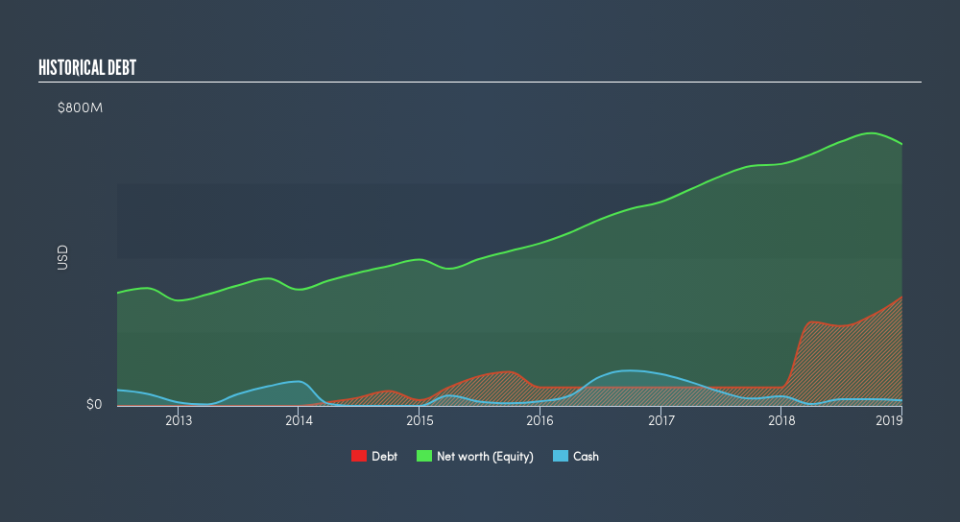Is LCI Industries's (NYSE:LCII) Balance Sheet A Threat To Its Future?

Small-caps and large-caps are wildly popular among investors, however, mid-cap stocks, such as LCI Industries (NYSE:LCII), with a market capitalization of US$2.3b, rarely draw their attention from the investing community. Surprisingly though, when accounted for risk, mid-caps have delivered better returns compared to the two other categories of stocks. Today we will look at LCII’s financial liquidity and debt levels, which are strong indicators for whether the company can weather economic downturns or fund strategic acquisitions for future growth. Note that this commentary is very high-level and solely focused on financial health, so I suggest you dig deeper yourself into LCII here.
See our latest analysis for LCI Industries
Does LCII Produce Much Cash Relative To Its Debt?
LCII has built up its total debt levels in the last twelve months, from US$50m to US$294m , which accounts for long term debt. With this increase in debt, the current cash and short-term investment levels stands at US$15m , ready to be used for running the business. On top of this, LCII has produced cash from operations of US$157m in the last twelve months, leading to an operating cash to total debt ratio of 53%, meaning that LCII’s current level of operating cash is high enough to cover debt.
Can LCII pay its short-term liabilities?
Looking at LCII’s US$178m in current liabilities, it seems that the business has been able to meet these obligations given the level of current assets of US$527m, with a current ratio of 2.97x. The current ratio is calculated by dividing current assets by current liabilities. Usually, for Auto Components companies, this is a suitable ratio as there's enough of a cash buffer without holding too much capital in low return investments.
Can LCII service its debt comfortably?
LCII is a relatively highly levered company with a debt-to-equity of 42%. This is not unusual for mid-caps as debt tends to be a cheaper and faster source of funding for some businesses. No matter how high the company’s debt, if it can easily cover the interest payments, it’s considered to be efficient with its use of excess leverage. A company generating earnings after interest and tax at least three times its net interest payments is considered financially sound. In LCII's case, the ratio of 30.89x suggests that interest is comfortably covered, which means that lenders may be less hesitant to lend out more funding as LCII’s high interest coverage is seen as responsible and safe practice.
Next Steps:
Although LCII’s debt level is towards the higher end of the spectrum, its cash flow coverage seems adequate to meet obligations which means its debt is being efficiently utilised. Since there is also no concerns around LCII's liquidity needs, this may be its optimal capital structure for the time being. I admit this is a fairly basic analysis for LCII's financial health. Other important fundamentals need to be considered alongside. I suggest you continue to research LCI Industries to get a more holistic view of the mid-cap by looking at:
Future Outlook: What are well-informed industry analysts predicting for LCII’s future growth? Take a look at our free research report of analyst consensus for LCII’s outlook.
Valuation: What is LCII worth today? Is the stock undervalued, even when its growth outlook is factored into its intrinsic value? The intrinsic value infographic in our free research report helps visualize whether LCII is currently mispriced by the market.
Other High-Performing Stocks: Are there other stocks that provide better prospects with proven track records? Explore our free list of these great stocks here.
We aim to bring you long-term focused research analysis driven by fundamental data. Note that our analysis may not factor in the latest price-sensitive company announcements or qualitative material.
If you spot an error that warrants correction, please contact the editor at editorial-team@simplywallst.com. This article by Simply Wall St is general in nature. It does not constitute a recommendation to buy or sell any stock, and does not take account of your objectives, or your financial situation. Simply Wall St has no position in the stocks mentioned. Thank you for reading.

